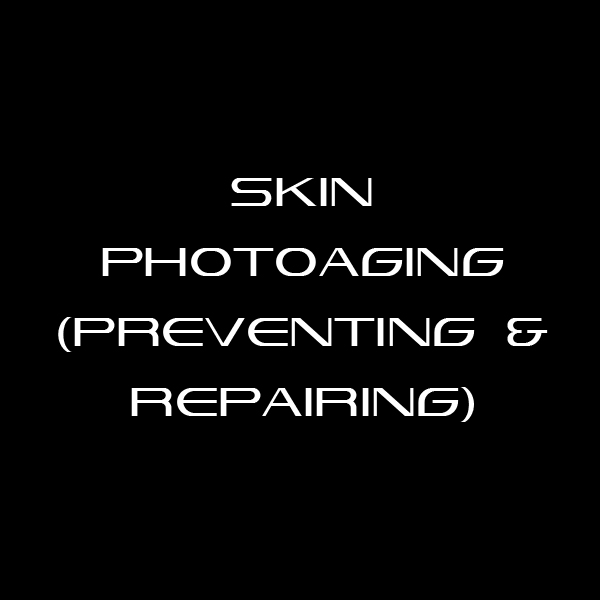

Sun-damaged skin recovery is a crucial aspect of maintaining healthy skin and preventing premature aging. Sun exposure is a significant contributor to skin damage, and understanding how to repair and prevent further photoaging is essential for achieving a youthful complexion. This comprehensive guide provides a roadmap to recovery, delving into the science behind sun damage, and offering effective strategies for repairing and preventing further skin aging. We will examine the science of skin damage, discuss effective strategies for recovery, and explore preventative measures to maintain healthy skin. By the end of this article, you’ll have a clear understanding of how to effectively address and prevent sun-damaged skin issues.
Understanding the Science of Sun Damage
The Damaging Effects of UV Rays
Ultraviolet (UV) radiation, primarily from sunlight, is a significant contributor to skin damage and photoaging. UV rays penetrate the skin’s surface, causing cellular damage that leads to the formation of free radicals. These free radicals damage collagen and elastin fibers, the proteins that maintain skin’s elasticity and structure. Prolonged sun exposure can also lead to inflammation and oxidative stress, accelerating the aging process. In the long run, these effects lead to wrinkles, age spots, and a loss of skin firmness. Studies have shown that approximately 80% of visible aging is caused by sun exposure. This highlights the importance of sun-damage prevention strategies for long-term skin health. The constant assault of UV rays makes sun protection vital for maintaining youthful skin.
How UV Rays Damage Collagen and Elastin
Exposure to UV radiation can damage the collagen and elastin fibers that give skin its firmness and elasticity. The damage disrupts the production and maintenance of these essential proteins. This breakdown is a primary factor contributing to wrinkles, fine lines, and a loss of skin elasticity. Understanding the breakdown process helps to comprehend the importance of employing effective strategies for sun damage repair.
Implementing Effective Sun Protection Strategies
The Importance of Sunscreen
Consistent use of broad-spectrum sunscreen with an SPF of 30 or higher is paramount for preventing sun damage. Sunscreen helps to block UV rays from reaching the skin, protecting against the formation of free radicals and oxidative stress. Daily application, even on cloudy days, is recommended to maintain adequate protection. Using a water-resistant formula is especially important for outdoor activities.
Additional Protective Measures
Beyond sunscreen, additional measures can further enhance sun protection. Seek shade during peak sun hours, particularly between 10 am and 4 pm. Wear protective clothing, such as long-sleeved shirts and wide-brimmed hats, to shield skin from direct sunlight. Consider using UV-protective eyewear to protect the delicate skin around the eyes. By incorporating these preventative measures, you can create a strong defense against the damaging effects of UV radiation.
Addressing Sun-Damaged Skin
Identifying the Types of Damage
Sun-damaged skin can manifest in various ways, including wrinkles, fine lines, age spots (hyperpigmentation), and a loss of skin elasticity. Different types of sun damage require specific treatment strategies. Addressing the specific type of damage with the right approach is crucial for successful recovery.
Targeted Treatment Approaches
Addressing sun damage effectively requires a combination of preventative measures and targeted treatments. Skincare products containing ingredients like vitamin C, retinol, and antioxidants help to reduce the appearance of age spots and stimulate collagen production. Professional treatments like chemical peels and laser therapy can help to remove layers of damaged skin and promote cell renewal. Consult a dermatologist to determine the best treatment plan for addressing specific skin concerns related to sun damage. Addressing these concerns early on will improve the long-term outcomes.
Lifestyle Choices for Sun-Damaged Skin Recovery
The Role of Hydration
Hydration is essential for maintaining healthy skin. Adequate water intake helps to keep the skin hydrated from the inside out, promoting its elasticity and overall health. Maintaining proper hydration levels can improve the skin’s texture and resilience against damage, enabling quicker recovery.
Nutritional Intake and Sun-Damaged Skin Recovery
Eating a balanced diet rich in antioxidants, vitamins, and minerals is beneficial for sun-damaged skin recovery. Antioxidants help combat free radicals, promoting collagen and elastin production. Fruits, vegetables, and whole grains are excellent sources of antioxidants. Maintaining a healthy diet supports the body’s ability to heal and repair sun-damaged skin.
Seeking Professional Help for Sun-Damaged Skin Recovery
Consulting a Dermatologist
Consulting a dermatologist is highly recommended for personalized guidance and treatment. Dermatologists can assess the extent of sun damage and recommend appropriate treatments based on your specific skin type and concerns.
Specialized Skin Treatments
Dermatologists may recommend specialized treatments to address the particular needs of your skin. These treatments can range from topical applications to advanced procedures. A doctor can suggest products and procedures specifically designed to address the underlying causes of skin damage.
Prevention: Protecting Against Future Sun Damage
Understanding Sun Protection
Knowing when, how, and where to protect yourself is vital to preventing future sun damage. Recognize the peak sun hours and strategically seek shade during those times.
Importance of Protective Clothing
Use protective clothing, such as wide-brimmed hats and long-sleeved shirts, to reduce direct sun exposure. This helps to reduce the likelihood of sunburns and the formation of age spots. By being proactive about sun protection, you safeguard your skin from further damage and premature aging.
FAQ
What are the most effective skincare products for sun-damaged skin recovery?
Several skincare products effectively address sun-damaged skin. Vitamin C serums, retinol creams, and antioxidant-rich moisturizers help to combat free radical damage, reduce hyperpigmentation, and stimulate collagen production. Moisturizers are crucial in restoring hydration and preventing future damage. However, it’s vital to consult a dermatologist for personalized recommendations tailored to individual skin needs.
How often should I use sunscreen to prevent further damage?
To effectively prevent further sun damage, apply sunscreen daily, even on cloudy days. Reapply every two hours, or more frequently if swimming or sweating. By adopting a consistent sunscreen application routine, you significantly reduce your risk of future sun damage.
In conclusion, recovering from sun-damaged skin and preventing further photoaging requires a multi-faceted approach. Implementing consistent sun protection, incorporating potent skincare ingredients, and prioritizing a healthy lifestyle are crucial for restoring skin’s health and radiance. By consistently following these recommendations, you can actively participate in maintaining healthy, youthful-looking skin. Now, you can embrace sun-kissed beauty without compromising skin health. Schedule a consultation with a dermatologist to develop a personalized skincare routine that meets your specific needs for sun-damaged skin recovery. Start your journey to healthier, more radiant skin today!